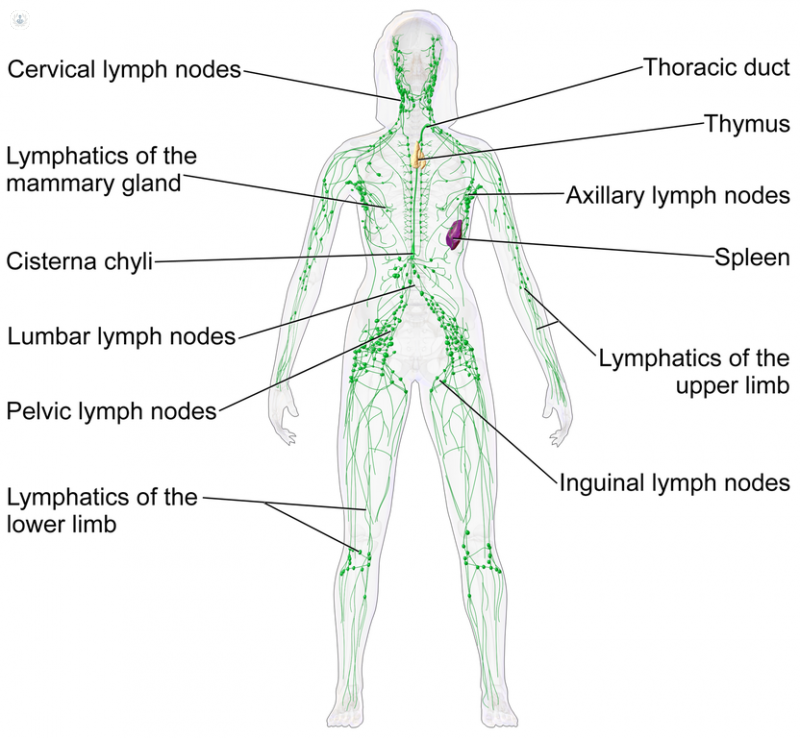

What is a lymphoscintigraphy?
Lymphoscintigraphy is a diagnostic test that helps evaluate the body's lymphatic system to detect diseases, especially lymphatic cancer.

What happens during a lymphoscintigraphy?
The test involves injecting small amounts of radiotracer, a radioactive material, into the skin, which travels through the analysed area and provides energy in the form of gamma rays. These are then located with a special camera and projected onto a computer to visualize the interior of the body, enabling radiologists to study its activity at the molecular level.
Why is a lymphoscintigraphy performed?
A lymphoscintigraphy is used mainly in the diagnosis of lymphatic cancer. By identifying where cancer cells are building up in the lymphatic system, medical oncologists can assess where the cancer has spread and decide where to perform a biopsy to gather further information.
Preparing for a lymphoscintigraphy
Before the test:
- you’ll need to tell the doctor what medication you are taking, including herbal supplements or vitamins
- you’ll also need to inform them of any allergies you have
- women should always the doctor if there is a chance they could be pregnant or breastfeeding, as the scan could potentially cause harm to the child
Finally, you won’t be able to wear jewellery or piercings in the exam so you should take these off before going in for the scam.
What does the exam feel like?
The exam involves lying flat on an examination table while a scanner rotates around you and takes pictures of your lymph nodes.
At the beginning of the exam, a nurse will insert an IV line into your arm. This delivers the radiotracer into your body which is what the camera picks up to create the images.
When the radiotracer is injected through the skin, a cold sensation can be experienced, but in very few cases significant side effects appear. You may get some discomfort from having to stay still in a certain position during the test.
What do abnormal results mean?
The main diseases of the lymphatic system that this test can detect are:
- Lymphoma (lymphatic cancer)
- Adenopathy (swelling of the lymph nodes)
- Lymphatic edema or lymphedema (increased protein and interstitial fluid)
- Lympho dynamic edema (increased lymphatic load)
- Lipedema (irregular accumulation of adipose tissue in the hips, legs and ankles)
- Myxedema (accumulation of mucopolysaccharides and proteins and alterations of the thyroid
- Lymphangitis (wound in the lymphatic system)
